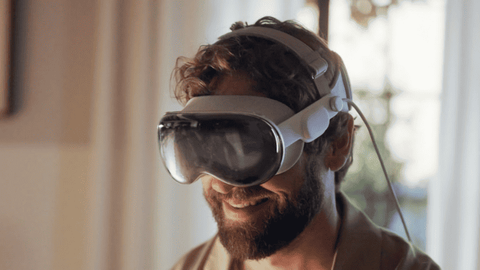Netflix decided not to make a Vision Pro App for the headset. Greg Peters, the co-CEO of Netflix, the big streaming service talked to Stratechery and said he’s not sure the headset will change much in how we watch stuff. The decision is attributed to the Vision Pro’s limited audience, niche appeal, and what Peters refers to as its “subscale” nature.
Concerns about Scalability
Peters raised concerns about Vision Pro’s scalability, emphasizing the importance of investing in platforms with a higher return. He highlighted the limited shipments and niche market of the headset, stating that catering to such a small user base might not be a wise allocation of resources. According to Peters, the current state of the Vision Pro makes it “not relevant” to most Netflix members.
Financial Considerations
In the interview, Peters pointed out the need for careful financial management. He said Netflix needs to be careful where they spend money. They’re not saying no to making a Vision Pro app, but Peters stressed they want to see how many people are using the device and if it’s making a big impact before they decide to spend money on it.
Ongoing Discussions with Apple
Despite the decision not to develop a dedicated app at this time, Peters mentioned that Netflix and Apple are in constant discussions. The long-standing partnership between the two companies involves active conversations about how they can collaborate and support each other. Peters noted that sometimes they find areas of great overlap and can move quickly, while other times it may take a bit longer to reach agreements.
Limited Availability and Pricing
The Vision Pro, priced at $3,500, falls outside the budget range for many Apple customers. Rumors suggest that Apple plans to manufacture a limited number of Vision Pro devices in 2024, with analyst Ming-Chi Kuo estimating sales figures between 160,000 to 180,000 units during pre-orders. Despite early demand, Kuo views the Vision Pro as a “very niche product,” a sentiment echoed by Netflix’s decision not to develop an app for the device.
Implications for Users
With Netflix opting not to create a Vision Pro app, users of the mixed-reality headset will need to access the streaming service through the Safari web browser on the device. This limitation, coupled with similar decisions from other major companies like Google, means that popular apps such as Netflix, YouTube, and Spotify will not be available as dedicated applications on the Vision Pro at launch.

Conclusion
The absence of YouTube, Spotify, and Netflix on Apple Vision Pro raises questions about the headset’s scalability and relevance to their respective subscriber bases. Netflix’s decision not to develop a Apple Vision Pro app underscores concerns about the device’s adaptability. This underscores concerns about the headset’s scalability and relevance to its subscriber base. As the streaming landscape continues to evolve, the relationship between content providers and emerging technologies like mixed reality remains a dynamic aspect worth monitoring.
While Netflix has not closed the door on a future Vision Pro app, its current stance reflects a strategic approach to resource allocation and a commitment to platforms that offer a more substantial return on investment. Learn more about Netflix’s decision and its implications for mixed reality adoption on our internal link.
FAQs
Q1. Why isn’t Netflix getting cozy with Apple’s Vision Pro?
Netflix isn’t feeling the vibe that it’s a total game-changer for how we chill with our shows. They’re not catching those good vibes for making a special app just yet.
Q2. Will Netflix ever catch the feels for a Vision Pro app?
It’s a bit of a maybe. Greg Peters from Netflix is keeping an open heart about it. They just want to feel the love from a bunch of people using the Vision Pro and if it’s making waves before they decide to make an app.



